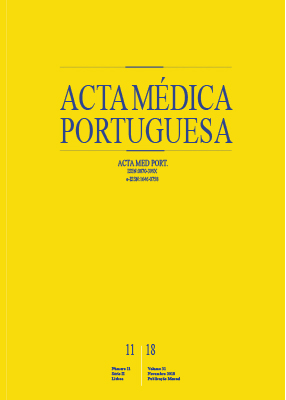Supportive Care Network: Evaluation of Its Impact on the Performance of a Urology Department
DOI:
https://doi.org/10.20344/amp.9940Keywords:
Geriatrics, Length of Stay, Palliative Care, Referral and Consultation, UrologyAbstract
Introduction: Hospitals are dealing with patients who may have clinical discharge but cannot return to their home due to non-medical issues.
Material and Methods: Cross-sectional analysis of all the cases referred to the Integrated Care Network during the year 2016. Evaluation of waiting times, typology, reason for referral and clinical parameters. IBM SPSS 24.0 software was used for all statistical
analyses.
Results: In the evaluated period, 2294 patients were discharged from our department. Of these, 55 were referred to Integrated Care Network. The mean length of hospitalization of the patients referred to the network was 20.6 ± 11.4 days, and the mean overall length of hospital stay in the period analyzed was 4.8 ± 0.9 days. The mean time between hospitalization and referral for continuing care was 10.7 ± 7.2 days. The time between referral and discharge of the hospital was 10.0 ± 8.7 days. Thirty-nine (70.9%) patients were hospitalized for oncological diseases. The most common referral was to Palliative Care units (n = 16; 29.1%). Patients referred to Palliative Care units showed the largest waiting times between the referral for the network and the hospital discharge, 12.2 ± 10.51 days. We observed 289 hospitalization days with patients who had no need of specialized urological care.
Discussion: In order to reduce time between referral to the network and hospital discharge, there is a need for enhanced cooperation and coordination among doctors, nurses and social workers.
Conclusion: Early identification by physicians and nurses of patients who will require care after discharge will provide a better response from social workers and increased hospital performance.
Downloads
Downloads
Published
How to Cite
Issue
Section
License
All the articles published in the AMP are open access and comply with the requirements of funding agencies or academic institutions. The AMP is governed by the terms of the Creative Commons ‘Attribution – Non-Commercial Use - (CC-BY-NC)’ license, regarding the use by third parties.
It is the author’s responsibility to obtain approval for the reproduction of figures, tables, etc. from other publications.
Upon acceptance of an article for publication, the authors will be asked to complete the ICMJE “Copyright Liability and Copyright Sharing Statement “(http://www.actamedicaportuguesa.com/info/AMP-NormasPublicacao.pdf) and the “Declaration of Potential Conflicts of Interest” (http:// www.icmje.org/conflicts-of-interest). An e-mail will be sent to the corresponding author to acknowledge receipt of the manuscript.
After publication, the authors are authorised to make their articles available in repositories of their institutions of origin, as long as they always mention where they were published and according to the Creative Commons license.









